Peperomia plant - photos and types
Peperomia is a mostly ampelous plant with a huge variety of leaf colors and shapes. They can be of various shades of green, brown, golden, have numerous spots, stripes and streaks. Leaf blades also differ in their structure - dense and leathery, soft and wrinkled, thin and smooth.
The stems are generally thick and fleshy, the root system is compact.
The genus includes about 1160 species. For growing in residential premises, flower growers mainly use peperomies:
- clusiform (Peperomia clusiifolia);
- velvety (Peperomia velutina);
- reddish (Peperomia rubella);
- spotted (Peperomia maculosa);
- marble (Peperomia marmorata);
- pleasant (Peperomia blanda);
- gray-haired (Peperomia incana);
- silvery (Peperomia argyreia);
- shriveled (Peperomia caperata);
- dull-leaved (Peperomia obtusifolia).
Peperomia clusiform
Herbaceous perennial with dark, fleshy stems. Leaves are tough, arranged on short petioles, wedge-shaped and a narrow purple border. On sale you can find the varigate form - it has less bright foliage and dark green stripes can be seen on the surface.
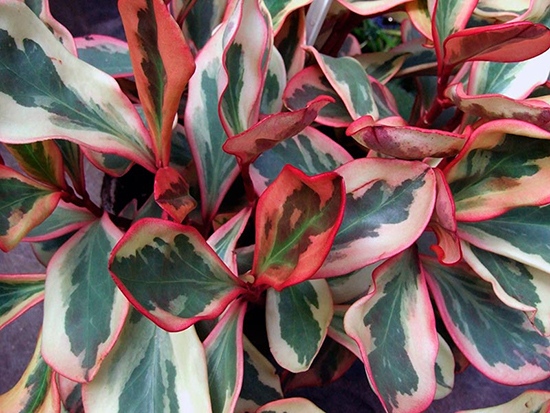
Peperomia velvety
This species differs from others in dark, with a red tint, rounded foliage and pubescent stems. The surface of the leaf blade is smooth, has silvery stripes. This plant blooms with spike-shaped, low inflorescences about 6 centimeters long.

Peperomia is reddish
This species has thin, strongly branched, reddish shoots. The leaves are oval, small in size, greenish above, and reddish below.

Peperomia spotted
Herbaceous perennial with thick stems on which characteristic brown specks can be seen. The alternate leaves are located on long petioles, have a varied shape, a pointed tip and clearly visible white stripes. It blooms with dark, elongated spikelets.

Peperomia marble
It is a low, ornamental-deciduous plant with small rounded leaves, which are mostly greenish-marbled in color. The main feature of this species is the size of the leaf blades, their length in the center and at the edges is significantly different. Inflorescences are thin, spike-shaped, whitish flowers.
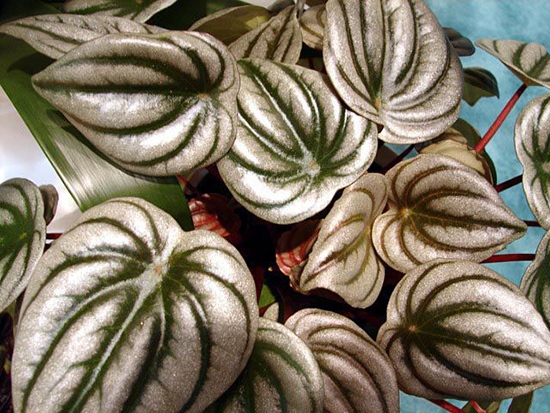
Peperomia is pleasant
Perennial epiphyte with purple stems, which branch weakly. Oval, velvety leaves are opposite, greenish above and reddish below, as well as whitish veins. This species blooms with loose, spike-shaped inflorescences.
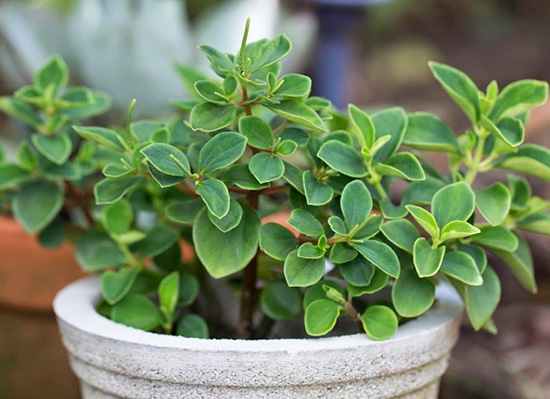
Peperomia gray
Ground perennial, the height of the bush of which can reach fifty centimeters. The leaves are round, thick, have a clear midrib and white pubescence.

Peperomia silvery
Epiphytic perennial with highly branching stems. Oval, fleshy, with a glossy surface, the leaves on long petioles have wide white stripes. It blooms with long cobs.
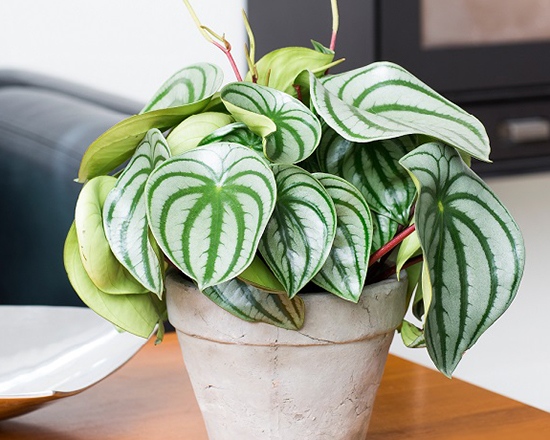
Peperomia shriveled
A short plant with closely spaced, wrinkled leaf blades that vary in color from light green to dark brown. The species has depressed, raised veins and pinkish, long petioles. Inflorescences are spike-shaped, light white, stand out well against the background of dark leaves.
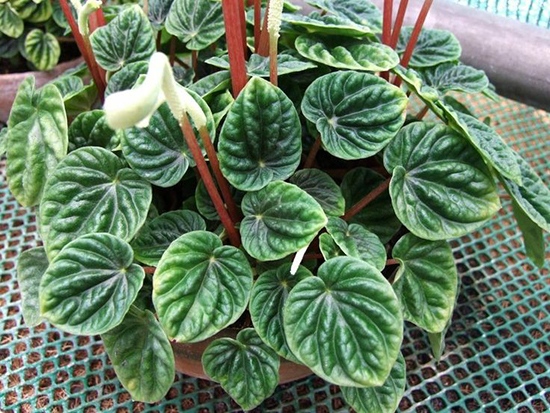
Peperomia blunt-leaved
Perennial with bare stems, which can be both terrestrial and epiphytic. Leathery elliptical leaves have a blunt end. This plant is ornamental-deciduous, widely cultivated and therefore individual varieties can be varigate.

Reproduction methods
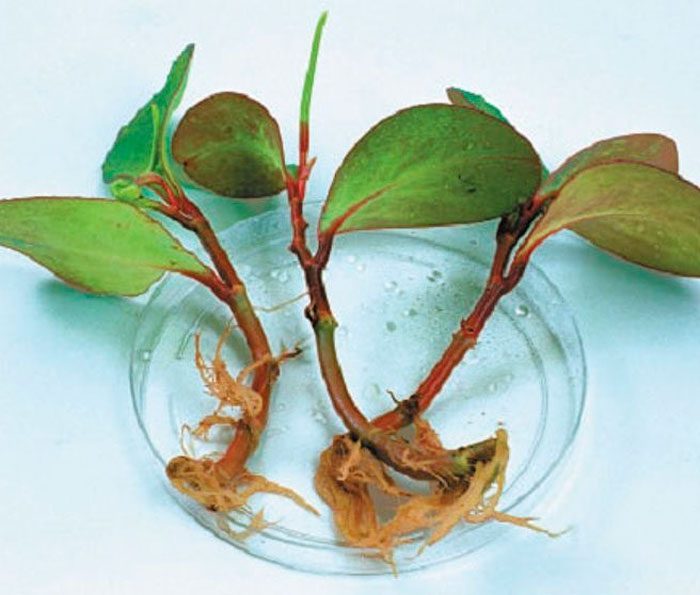
Growing from seeds
Sowing seeds is carried out in March or April. To do this, use containers filled with a substrate consisting of leafy soil and sand (1: 1). When the seeds are sown, the substrate is watered using a fine strainer or spray bottle. From above, the bowl is covered with film or glass and removed to a warm place (about 25 degrees).Provide the crops with systematic ventilation, as well as timely moistening of the soil mixture surface. After the second true leaf plate is formed in the seedlings that have appeared, they will need to be cut into a box filled with the same soil mixture, while a distance of 20 mm must be maintained between the plants. Provide plenty of bright light for the seedlings, but protect them from direct sunlight. Daylight hours should be long. After the bushes get stronger and grow up, they are seated in separate pots, reaching about 70 mm in diameter. A good drainage layer is made at the bottom of the container, and an earth mixture is used for planting, which includes peat, sand, turf and leafy soil (2: 1: 1: 2). Then they begin to look after the bushes in the same way as for adult peperomia.
Propagation by stem cuttings
For propagation, you can use both apical and stem cuttings. For their rooting, they take a substrate consisting of peat, sand and humus (1: 1: 1). There should be 1-3 nodes on the handle (depending on the length of internodes). For rooting, cuttings can be placed in a container with water or planted in soil mixture. The cuttings planted in the substrate are covered with glass from above and removed to a warm place (about 25 degrees). Rooting will take about four weeks. Cuttings that have taken root are planted in separate pots and looked after as if they were adult peperomias.
Peperomia care and reproduction.
Leaf propagation
Select an absolutely healthy, undamaged leaf plate on the bush and cut it off with a very sharp knife or blade. She needs to leave a short petiole. For rooting, it is planted in sphagnum moss or in a substrate of sand and peat, it can also be placed in a glass of water, which is regularly (once every 1-2 days) replaced with fresh water. To speed up the rooting process, the leaf is placed in a mini greenhouse. After 20-30 days, the leaf will have to give roots, after which it is planted in a pot, reaching 70 mm in diameter. After the bush gets stronger, they begin to care for it like an adult plant.
Dividing the bush
In this case, you will need a heavily overgrown adult bush. During transplantation in spring, it is divided into 2 or 3 parts.
This must be done very carefully, trying not to injure the root system of the plant. The soil mixture is used the same as during transplantation (see above)
The pot is taken smaller than usual, and a good drainage layer is necessarily made at its bottom.
Succulent species
Chisel peperomia (Peperomia dolabriformis)
A real succulent with very original leaves. They resemble circles folded in half. There is a sharpening at the tips. They are mounted on a thick trunk, forming a star-shaped rosette. The leaves reach a length of 7 cm, and a width of about 2 cm.A dark green border is formed in the places where the leaves grow together.
Stems are erect, little branching, reaching a height of 60 cm. But unlike many relatives, it blooms quite gracefully, releasing branched inflorescences with small white-greenish flowers.
 Chiselled peperomia
Chiselled peperomia
Peperomia columella or columnar (Peperomia columella) - Column
A very interesting species that amazes with the originality of its leaves. Many emerald-colored leaves, similar to dragon scales, densely cover the stem. It grows only 20 cm in height, so it is better to plant the flower in groups. Upon reaching a certain age, the stems begin to bend in an arched manner, and then they can be planted in a pots and used as an ampelous plant.
 Peperomia columella
Peperomia columella
Peperomia ferreyrae
A striking representative of epiphytic succulent plants. All beauty lies in the bright green leaves. They seem to have grown together in the middle, and the place of this union is highlighted in a darker green color. The height of the plant does not exceed 30 cm, and the leaves can grow up to 7-8 cm in length.Since they contain a large amount of moisture, in appearance they are very elastic and thick. The plant loves moist soil, but does not tolerate stagnant water at all. Be sure to drain the excess water from the sump. If the leaves are very dusty, you can make a small tropical rain from the shower with warm water, while trying not to flood the soil.
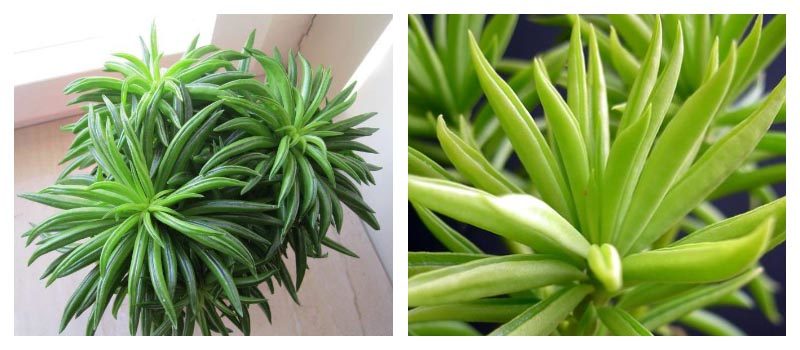 Peperomia Ferreira
Peperomia Ferreira
Peperomia graveolens
The humble tropical beauty is one of the succulent Peperomia species. All beauty is in the leaves of this plant. Nature has painted them in a rather bizarre way. The leaves are light green above, and ruby or burgundy below. The leaves curl up to the most erect burgundy trunk. The whole species of the plant resembles sea coral, especially when the ground is covered with small sea pebbles. It grows as a small bush, up to 25 cm in height. It blooms modestly, with long spikelets with light yellow flowers on long burgundy peduncles.
 Peperomia Graveolens
Peperomia Graveolens
Peperomia verticillata
A perennial herb, evergreen, with ampelous shoots drooping down. Has fleshy leaves of a grayish-green color. The whorled shape of the leaf attachment gave the appropriate name. This variety is best propagated by cuttings. During the formation of the crown, you can postpone the trimmed tops for subsequent rooting.
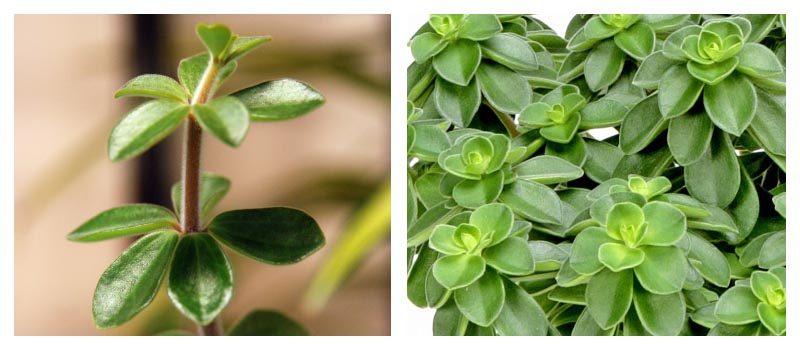 Peperomia whorled
Peperomia whorled
Reproduction
Peperomia Rosso propagates by cuttings, bush and seeds.
Propagation by cuttings:
- Leave a small stalk on the leaf (about 2-4 cm).
- Place it in damp moss. You can use sand.
- After root formation (on average after 3 weeks), plant the plant in a pot.
Seed method:
- Fill the container with the substrate: sand and leafy earth. Moisturize.
- Sow seeds.
- Cover the container with glass.
- Air and spray the seedlings 2-3 times a week.
- After the emergence of sprouts and the formation of 2 sheets, transplant the seedlings into another container with a step of 2-3 cm.
- After strengthening and rooting, young plants should be transplanted into separate pots with a diameter of 7 cm.
Division of the bush:
- Remove the flower from the pot.
- Examine the root and carefully divide it into 2 equal parts.
- Plant the resulting bushes in separate pots.
- Moisten the soil abundantly.
Important! It is not recommended to use scissors or other tools to separate the bush. You must perform the procedure manually.
Peperomia plant species: photos and names
The most popular are:
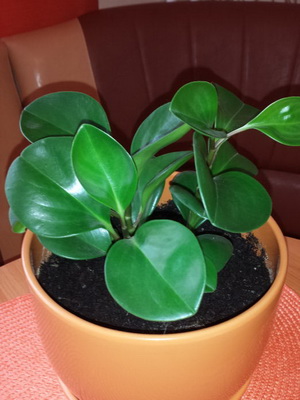
Peperomia hybrid (P. hybrida)
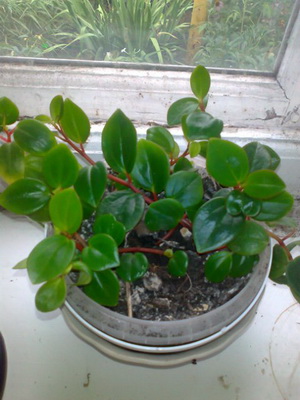
Peperomia head (P. glabella)

Peperomia clusiifolia (P. clusiifolia) erect plant, succulent green leaves with a purple border

Peperomia reddish (P. rubella)

Peperomia climbing form variegated (P. scandensf.variegata)
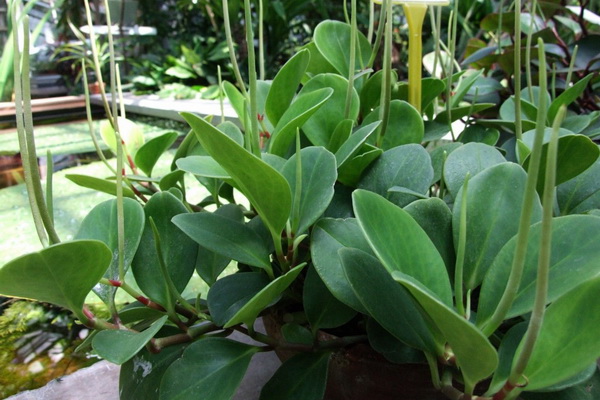
Peperomia magnolialeaf ‘Atropurpurea’ (P. magnoliaefolia ‘Atropurpurea’)
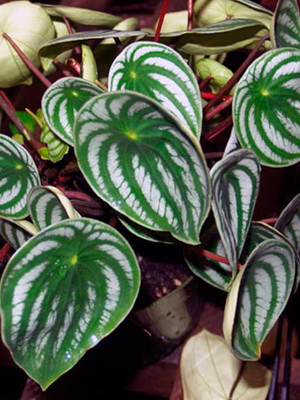
Peperomia multi-spotted (P. maculosa)

Peperomia marble (P. marmorata)

Peperomia shriveled (P. caperata) - has shriveled leaves of a dark green color.
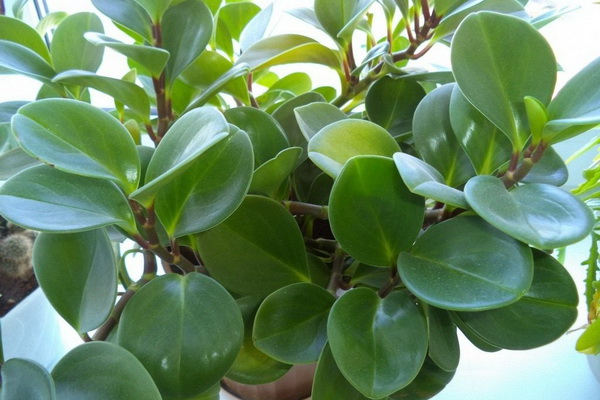
Bearded peperomia is an ampelous plant with long, thin shoots covered with small oval leaves.

Peperomia ariholia is considered the most decorative species due to the silvery stripes on the leaves.
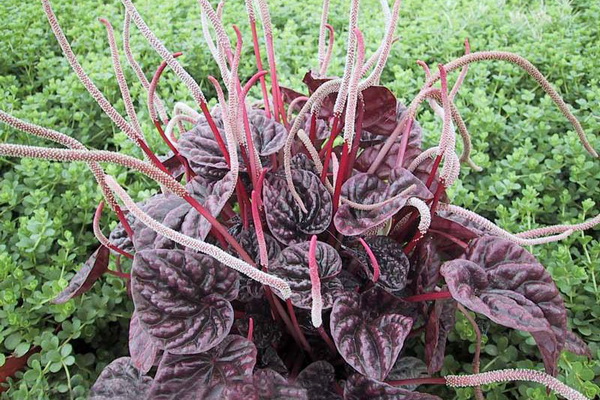
Peperomia caprata can be easily recognized by the wrinkled leaves.

Climbing peperomia, variegated - P. scandens variegate.
Homeland - Peru. Ampel or creeping plant with fleshy yellowish-white stems and small heart-shaped light green leaves, decorated with creamy white irregular stripes. Inflorescences on reddish pedicels. Undemanding to lighting.
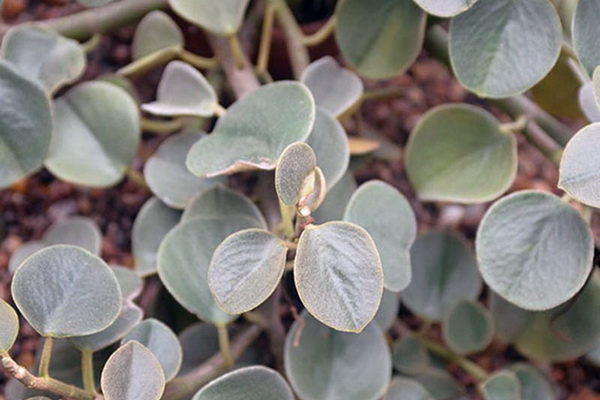
Peperomia gray -P. Incana. Homeland - Brazil. The stem is thick, fleshy, pale green. The leaves are large, gray-green, fleshy, cordate, slightly pubescent.
As you can see in the photo, in the indoor peperomia flower of this species, young shoots are slender, but over time they become ampelous:
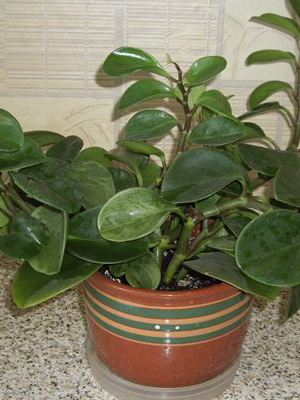
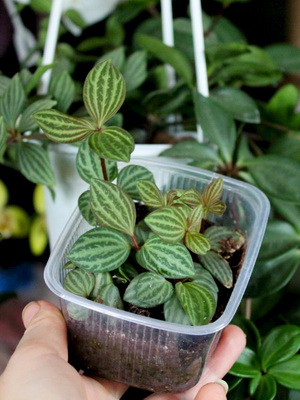

Peperomia silvery (P.argyreia) is a short, compact plant with a short branching pinkish-green stem.
The leaves are rounded-ovate, 6–9 cm long and 5–8 cm wide, collected in rosettes, dark green with silvery stripes, with a pearlescent tint. The flowers are small, greenish-white, collected in a thin inflorescence.
In culture, shriveled peperomia is most often grown. Her homeland is Brazil. Plant height is no more than 10-15 cm. Flowering usually occurs in summer. The inflorescences are curved, in the form of a long outgrowth, similar to a tail, composed of very small flowers. In indoor floriculture, peperomias are used to fill small volumes when decorating interiors.
Look at the photos of the types of peperomia, the names of which are given above:


Description of the variety
Magnolialeaf peperomia belongs to the pepper family. Its homeland is the tropical forests of South America, most of it grows in Brazil.
The plant is considered a perennial. Its height reaches 25-30 meters. The stems are very large, fleshy, covered with many short-petiolate leaves. They, in turn, have a round oval shape.
The deciduous plate is smooth, a slight gloss is noticeable. The diameter of the leaves is about 5 cm. They are painted green, the shade changes from monochrome light to dark.
Magnolia-leaved peperomia has a "relative" - variegated peperomia. It does not bloom. In magnolia-leaved, the flowering period still begins, however, the inflorescences do not differ in an unusual shape, rather, they resemble spikelets of a plantain.
Magnolia-leaved - symbolic flower
Experts advise paying attention to the green bush to contradictory personalities, in whose character rebellion prevails. The plant creates a favorable atmosphere, smoothing out irregularities in human relationships and creating home comfort
In addition, peperomia is very beneficial for the air in a living room - it has the ability to cleanse, moisturize, and destroy germs and bacteria.
Care
Watering
Watering in the spring-summer period is carried out quite often, as soon as 2-3 cm of the soil substrate dries up. The water should be slightly above room temperature, it should be soft and well purified.
In autumn and winter, watering is reduced and watered only when the entire clod of earth is dry. The water from the sump must be drained in order to avoid the occurrence of fungal diseases and mold.
Strong moisture can lead to decay and death of the entire plant.
Therefore, water should be done carefully and in a timely manner.
Lighting
It is very important for Peperomia to find a suitable place:
- It should be well lit, but the plant should not be placed in direct sunlight. This will cause burns on the leaves and the succulent will lose its natural appeal.
- You should also not place the plant in shaded areas without additional artificial lighting. The plant will stretch out, the leaves will become smaller and faded than they should be. This is especially true of variegated forms of Peperomia.
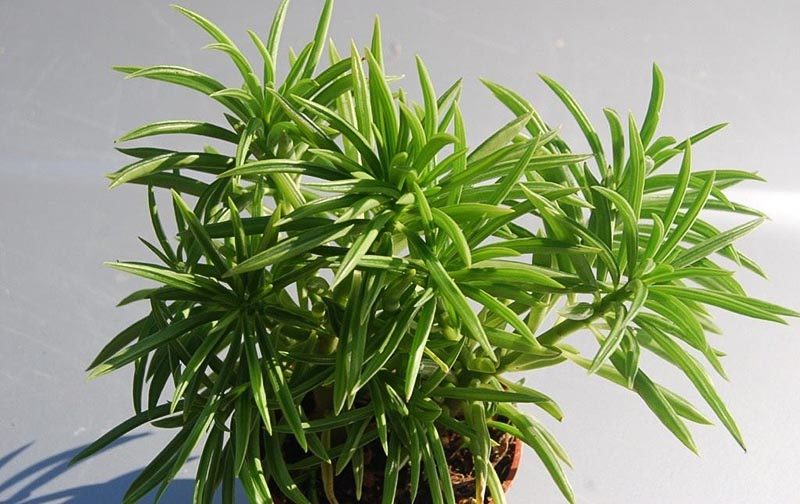
Temperature
This amazing plant practically does not need a dormant winter period. Peperomia perfectly tolerates the cold period at a temperature not lower than 16 degrees. But even at room temperature, the plant feels quite comfortable. In summer, you can expose Peperomia to fresh air, but not to direct sunlight, and avoid harmful drafts. Even a small draft will lead the plant to leaf fall and disease. The best place is a closed balcony or a place on a terrace out of the wind.
Humidity
The fleshy succulent leaves of Peperomia accumulate water well, so it makes no sense to artificially humidify the air. However, the plant loves spraying. On hot summer days, you can arrange a small shower, which, in addition to humidification, also has hygienic functions: it frees the leaves from dust, since it is difficult to clean the leaves with a sponge. Showers are carried out with warm soft water. Be sure to let the plant dry in the room before taking it out into the fresh air.
The soil
You can use traditional shop soil for cacti. You can make the potting mix yourself. To do this, take in equal parts:
- Garden humus steamed in the oven;
- leafy land;
- peat, can be bought at a flower shop;
- coarse river sand, well washed in running water.
Mix all the components until a homogeneous substance, add fine-grained expanded clay, crushed coal and a little zeolite.

Transfer
The plant is transplanted every three years. Peperomia grows rather slowly (meaning succulent species) and there is no need for frequent transplantation. Most often, a partial transplant is used - they change the pot to a wider one, add a soil mixture and replace the old soil 2-3 cm from above with a fresh mixture.
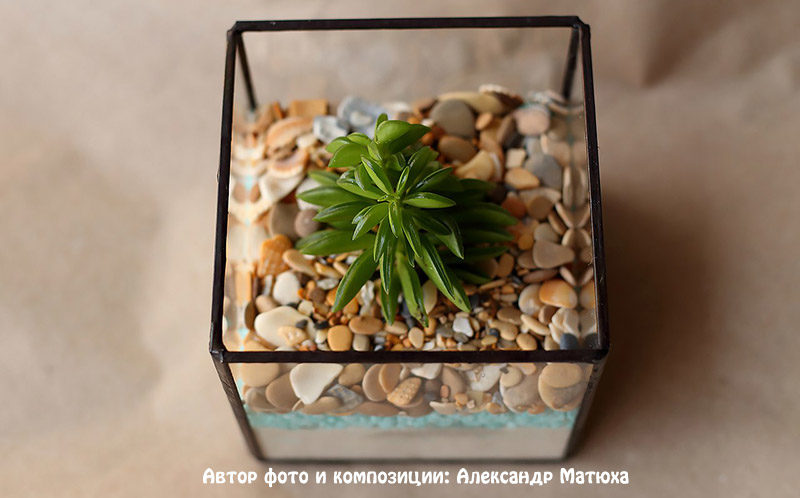
Fertilizer
Fertilized during the entire active growing season. It is enough to buy a complex fertilizer for succulents and cacti in the store and apply it according to the instructions along with watering. Fertilizers should be diluted in warm water. And do not overdo it, as strong concentration can burn the delicate roots of succulent species. With the right concentration and feeding time, the colors of the plant become brighter.

Flower care

- Immediately after purchase. On the first day, place the pot in partial shade, gradually accustoming the flower to bright light. It is best to buy a flowerpot in the spring or summer. After purchase, it is advisable to transplant it immediately. But if the flower looks painful, postpone the transplant, allowing the plant to take root in you. In the fall, transplant only a flowerpot, the roots of which protrude strongly from the pot. Do not transplant peperomia purchased in winter until early March.
- Lighting. A plant with a basic, dark green shade of leaves can be kept in partial shade, in the western (preferably) or eastern window. If you get a wrinkled peperomia with reddish or spotted leaves, place it on the east or south window, but so that direct rays still do not fall on the bush. If in winter the petioles are strongly stretched, and the leaves (especially in the colored variety) grow small, highlight the peperomia with a phytolamp.
- Room temperature. This plant is thermophilic - in the summer it prefers to stand at 22-25 degrees (if the house is very hot and stuffy, it is better to put it on the balcony, but not in the drafts). In winter, the plant is comfortable at 18-23, but if the temperature in the room drops below 16 degrees, the leaves of the flowerpot may freeze and begin to turn yellow.
- Air humidity. This epiphyte from the tropics needs high humidity. The easiest way is to pour gravel / expanded clay into a wide pallet near or under the pot and water it along with the flower. The moisture will begin to evaporate as it goes into the air. Instead (or as an addition) in summer and winter, spray the bush with settled, warm water three times a week.
- Watering. Defend the water and heat it slightly so that it is slightly warmer than room temperature. Pour it into the pallet from early spring to mid or late autumn, as soon as you notice that the soil is dry. Use a little water at a time. In winter, you can water the plant once a month, and even then - if the lower leaves begin to fall off (this means that the plant does not have enough moisture and it dumps "ballast").
- Nutrition. For peperomia, you can buy a complex mineral composition for decorative deciduous flowerpots. Give it from early spring to mid-fall, diluting it twice a month. But at the same time, add 2 times more water than recommended on the package.
- "Manual therapy". Firstly, if the leaves are covered with dust, they can be gently wiped with a damp cloth. Secondly, all dry leaves must be removed (they interfere with the normal development of the bush). Thirdly, too long shoots should be pinched. So the plant will actively branch out, taking shape in a lush bush.
- Rest period. Wild peperomia does not have it, but since in our latitudes in winter the lighting is not as generous as in summer, in the cold season, Peperomia Caperata is forced to rest from October to February.Do not feed her and water less.
Planting and transplanting peperomia
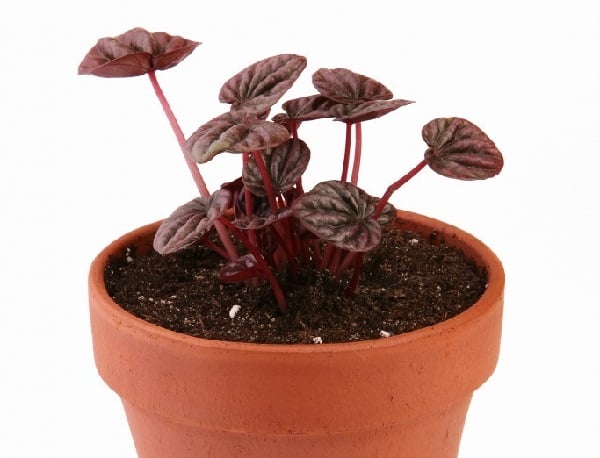
The soil for this epiphyte needs a light one. It can be assembled from the following components:
- leafy earth (add it more than other components),
- turf or humus,
- peat (optional)
- sand,
- sphagnum moss (both fresh and dried).
If you take the risk and plant the plant in ordinary garden soil (even in the best black soil), such soil will be too heavy for the roots of shriveled peperomia, and they will begin to rot.
Also be aware of drainage. At the bottom of the pot, a layer of expanded clay should be poured in a thick layer (about 6 cm).
Take a pot wide, but not deep. When replanting a plant, do not buy a "satellite dish" - it is enough to pick up a container 3 centimeters wider than the old pot.
You need to transplant the plant, depending on its age. A young epiphyte (from 1 to 3 years old) - every year, and a plant from the age of four - once every two years. Although, look at the roots: if they stick out of all the drainage holes after a year, this is a sign of the need for an urgent transplant. Conversely, if two years have passed, and the pot is still not close, you can wait another year.
Immediately after transplanting, do not feed the flowerpot for at least 15 days. It will find all vital substances in fresh soil. But you need to water immediately. Place the pot in partial shade. When the plant recovers after the procedure, then return it to the usual window.
